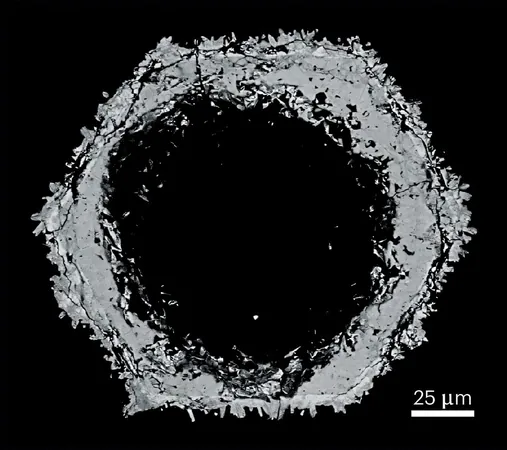
Rhabdophane: The Unsung Hero of Rare Earth Elements
2025-04-07
Author: Daniel
In the realm of geology, certain minerals shine bright while others languish in obscurity, overshadowed by their more illustrious siblings. A prime example of this is found in the world of rare earth elements (REEs). When most geoscientists are asked to name the phosphate mineral rich in these critical elements, the answer is often "monazite." This mineral has earned its status as a superstar due to its significant roles in geochronology, nuclear waste storage, and as a crucial source of rare earth minerals, accounting for a staggering 80% of global REE supply.
Yet, hiding in the shadows of monazite is its lesser-known counterpart: rhabdophane (REEPO4 · xH2O). Often forgotten, this hydrous mineral deserves a closer look, especially as the demand for rare earth elements continues to surge in the age of renewable energy and technological advancement.
What makes rhabdophane particularly fascinating is its formation process. Unlike monazite, which can crystallize in high-temperature conditions, rhabdophane emerges from cooler, low-temperature environments (below 250 °C). This results in a mineral that is fine-grained, porous, and difficult to analyze, relegating it to the background despite its importance in certain geological settings.
Rhabdophane may not go unnoticed for long, however. It plays a crucial role in regolith-hosted deposits, which are responsible for over 80% of the world's heavy rare earth element resources. During chemical weathering, rhabdophane often outperforms monazite, becoming the primary authigenic REE-phosphate mineral. This transition highlights its potential as a significant player in rare earth mineralization processes.
Additionally, rhabdophane contributes to critical mineral resources in locations like the Mt Weld carbonatite. Here, it serves as a valuable source of essential metals despite the challenges associated with its natural formation. The nuances of rhabdophane's characteristics are only beginning to pique the interest of scientists, promising new insights into rare earth element resources.
Beyond its geological significance, rhabdophane holds implications for environmental and health domains. It governs nutrient availability and contaminant migration in soils and forms in nuclear waste repositories, where it regulates the solubility of radioactive actinides. Intriguingly, rhabdophane has even been discovered in human lungs—an alarming reminder of how ubiquitous these minerals can be, stemming from accidental inhalation of rare-earth-oxide-rich materials.
As rare earth elements become increasingly crucial for the future—powering everything from electric vehicles to renewable energy technologies—the importance of rhabdophane cannot be overstated. Enhanced understanding and identification of this mineral could unlock crucial information about critical REE deposits and improve uranium-thorium-lead geochronometry in cooler hydrothermal systems where monazite cannot form.
While rhabdophane may appear as a complex and unyielding mineral at first glance, it deserves our attention and rigorous study. In a world increasingly reliant on rare earth elements, knowing every player's role—especially the underappreciated ones like rhabdophane—could be the key to unlocking new possibilities for technological advancement and environmental sustainability.





 Brasil (PT)
Brasil (PT)
 Canada (EN)
Canada (EN)
 Chile (ES)
Chile (ES)
 Česko (CS)
Česko (CS)
 대한민국 (KO)
대한민국 (KO)
 España (ES)
España (ES)
 France (FR)
France (FR)
 Hong Kong (EN)
Hong Kong (EN)
 Italia (IT)
Italia (IT)
 日本 (JA)
日本 (JA)
 Magyarország (HU)
Magyarország (HU)
 Norge (NO)
Norge (NO)
 Polska (PL)
Polska (PL)
 Schweiz (DE)
Schweiz (DE)
 Singapore (EN)
Singapore (EN)
 Sverige (SV)
Sverige (SV)
 Suomi (FI)
Suomi (FI)
 Türkiye (TR)
Türkiye (TR)
 الإمارات العربية المتحدة (AR)
الإمارات العربية المتحدة (AR)